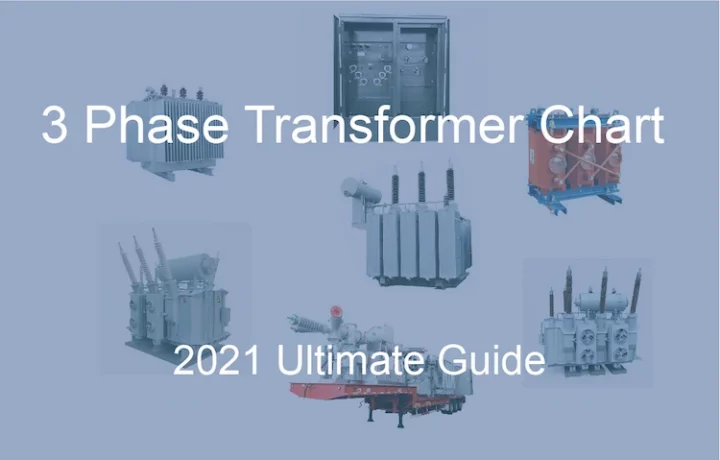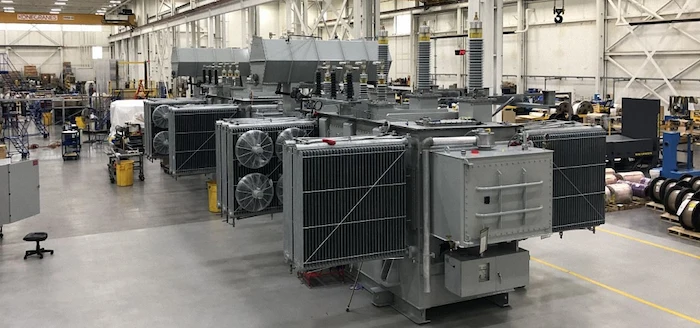ELECTRIC, WITH AN EDGE

In this article, you’ll learn about 3 phase transformer chart, sizing, computation, and relevant information.
Daelim Belefic is a renowned brand for electrical components and solutions in China in terms of three-phase transformers.
Daelim Belefic is well-known for producing large quantities of high-quality electronic components and solutions.
The company creates products that are reliable, cost-efficient, and compliant with international standards.
A Complete Guide to 3 Phase Transformer
-The three-phase 3 Phase Transformer is widely used to generate, transmit and distribute electrical power to industrial and commercial businesses.
What is the Difference Between 1 Phase 2 Phase and 3 Phase Power?
-About the difference between 2 phase, single-phase, and 3 phase power, delta connection and Y-connection of 3 phase power load let’s understand together.
Connection Mode of Working Winding of Three-phase Transformer
-The three high-voltage windings U1U2, V1V2, W1W2 and the three low-voltage windings u1u2, v1v2, w1w2 of the three-phase transformer are respectively connected to form a star or delta.
14+FAQ ABOUT THE PAD MOUNTED TRANSFORMER
-FIND THE BEST PAD-MOUNTED TRANSFORMER GUIDE ON THE WEB ALL IN ONE PLACE. SEE OUR LIST OF 14+FAQ RIGHT HERE.
A three-phase transformer works like a three-set iron core. Each set has its primary and secondary winding, where most of the power dispersed is in three-phase AC. A three-phase transformer is a self-contained and mostly static device operating in AC.
In power generation, the generator produces electricity by rotating three coils or windings within a magnetic field. Three-phase transformers almost work the same way. They have coils or windings spaced 120 degrees apart called “Delta” or “Wye” connections. However, instead of generating power, transformers simply convert the voltage that passes through them.
Every three-phase system has three coils or windings. These coils, when placed in the proper sequence, allow matching of voltages on desired ratings. There are plenty of advantages the three-phase transformer has over its single-phase counterpart. Below are the most notable ones:
However, there are also situations wherein a three-phase transformer is not practical. Among the disadvantages of three-phase transformers are:
Expensive maintenance and repair
If a three-phase transformer fails mid-way, all adjacent load areas shut down. The whole three coils shut down until repair.
A failed winding in a three-phase transformer requires a complete repair or replacement. Meanwhile, in the case of a single-phase transformer, only the faulty ones need replacement.
A three-phase transformer consists of three single-phase transformers wound on a single core. Manufacturers then place them in an enclosure filled with dielectric oil. That oil acts as a temperature regulator for the system. In terms of three-phase connections, four established types are the following:

To get the appropriate transformer rating, you can consider the adjoining requirements such as load and ampacity.
The three-phase transformer sizing chart below is your reference for the standard rating among different voltage levels:
3 Phase kVA=Volts x Amps x 1.73 / 1000
| KVA | 208V | 240V | 480V | 600V |
| 3 | 8.3 | 7.2 | 3.6 | 2.9 |
| 6 | 16.6 | 14.4 | 7.2 | 5.8 |
| 9 | 25 | 21.6 | 10.8 | 8.6 |
| 15 | 41 | 36 | 18 | 14.4 |
| 22 | 62 | 54 | 27 | 21.6 |
| 30 | 83 | 72 | 36 | 28 |
| 45 | 124 | 108 | 54 | 43 |
| 75 | 208 | 180 | 90 | 72 |
| 112 | 312 | 270 | 135 | 108 |
| 150 | 416 | 360 | 180 | 144 |
| 225 | 624 | 541 | 270 | 216 |
| 300 | 832 | 721 | 360 | 268 |
| 500 | 1387 | 1202 | 601 | 481 |
| 750 | 2084 | 1806 | 903 | 723 |
Do note that these are just standard numbers.
Often, specific model types have different thresholds of performance.
Thus, always consult your manufacturer to ensure you are getting the right specifications for transformers.
Now, if you are looking for a field-tested and reputable brand, look no further;
Daelim might have just what you need.
You can check their product catalog here.
To make a three-phase transformer calculation, you need to know the units involved.
VA represents Volts-amperes while kVA represents kilovolts-amperes.
These units are the sizing reference for every transformer and represent the apparent power of the device.
Apparent power is different from absolute power or real power represented by Watts.
On the other hand, Volts is the electromotive force present in a current, while Amperes represents the load current.
1. Look for the Load Voltage (Volts)
2. Determine the load current (Amperes)
3. Check line voltage
4. Lastly, know which phase design you are using, whether single or three phases. Use the formula below accordingly:
Single-Phase: Volts x Amps /1000 = kVA
Three-Phase: Volts x Amps x 1.732 /1000 = kVA
Sometimes you need to size a single phase transformer or three-phase transformer, and the KVA rating is the only needed parameter.
With simple equations, you can determine the correct transformer size for your project or operation.
This equation is the basic transformer formula applied in sing-phase designs:
Volts x Amps / 1,000 = kVA
However, you need to add an extra component in the formula for computing a three-phase transformer: the square root of 3 (√3) or 1.732.
This constant is necessary for three phases, as coils could not simultaneously produce a constant amount of power.
Furthermore, this also represents the three phases of AC handled by the system, where each line is 120 degrees apart.
Volts x Amps x √3 / 1,000 = kVA
For example, let’s say that you have a 120 voltage and 50 amps for a three-phase design.
120 x 50 x 1.732 / 1,000 = kVA
= 10.392 kVA ~ 11kVA
There you have it, and rounding up gives you a whole number of 11kVA.
Normally, 15kVa is standard manufacture and the nearest option for this scenario.
Just to note that although anything higher than the required kVA can handle lower loads, practicality always applies in the equations.
First, you don’t want to overkill a load by using transformers of far exceeding ratings.
Second, and lastly, you want to give enough leeway for further expansions.
It is a critical step in the determination of transformer size.
Preferably, all calculations should be rounded up.
Thus giving way for future expansions, you should always consider adding 20% as a spare threshold.
Continuing with our example:
11kVA x .2 = 2.2
11kVA + 2.2 (spare)= 13.2 kVA ~ 14 kVA
This result shall give you the final consideration for choosing the right transformer rating.
And speaking of standard market sizes, this example would most likely require a 15 kVA three-phase transformer.
There are two standard formulas for determining transformer kVA. For single-phase systems use:
Volts x Amps /1000 = kVA
Meanwhile, for three-phase systems use:
Volts x Amps x 1.732 /1000 = kVA
You add the square root of 3 or 1.732 to compensate for three-phase variations.
KVA is the unit of electric power that defines the amount of electrical energy a transformer can potentially handle.
A kVA represents the device’s apparent power, which excludes the power factor or differential on the “actual” power capability.
No. They are different. kVA or kilo-volts measure “apparent power.” Meanwhile, kW or kilo-Watts measure “real power.”
The kW formula is a product of kVA and “power factor,” as the formula below represents:
kW = kVA × PF
Real power indicates the actual efficiency of the load in real-life applications.
The kW unit is commonly found for meter reading and appliance power requirements.
Three-phase transformers are vital foundations in modern power distribution.
Understanding these devices will be beneficial in selecting the appropriate product and on-field application.
Hopefully, this article by Daelim clarified many of the questions you may have regarding three-phase transformer charts, sizing, and computation.
Daelim Belefic is a world-renowned transformer manufacturer that has been making quality transformers for a decade.
Daelim’s products are widely used in high voltage, low voltage, light industries, and similar applications.
Daelim Belefic is your innovative and reliable partner for electrical products and solutions.
Contact Daelim for the best transformer services.
If you find that the existing distribution transformer types or power cannot meet your requirements. You can choose to tell Daelim. Daelim has a team that has always had a wealth of design transformers, and can give you a specific design plan in the shortest time.
Daelim’s distribution transformers comply with IEEE, ANSI, CSA, IEC certification, and are used in North America (such as Canada, the United States, Mexico), South America (such as Ecuador, Chile), Europe (such as Spain, Lithuania) and some Asian countries. Daelim even has a professional installation team that can provide you with installation services.
ELECTRIC, WITH AN ENGE-- DAELIM BELEFIC
After filling in the contact information, you can download the PDF.